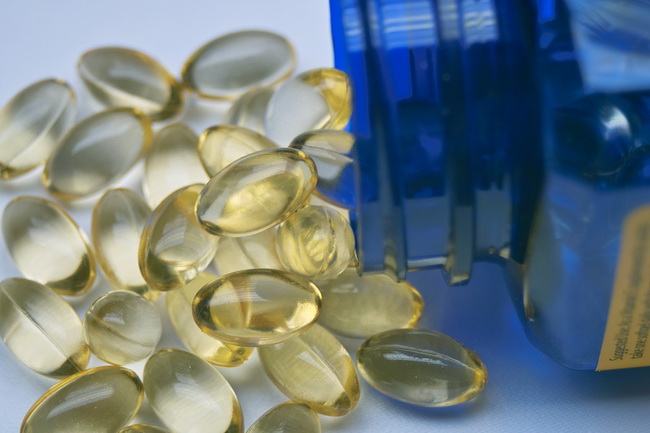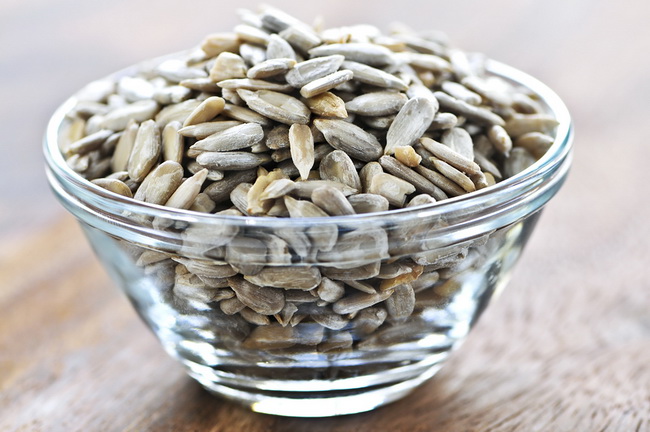- Make It Yourself Lavender Heart-Shaped Bath Bombs!
- 20 Things You Never Knew About “Down There”
- 12 Best Foods For Those Suffering From Arthritis Pain
- 12 Personal Hygiene Mistakes Almost Everyone Makes (Mom Never Told You About #4!)
- 15 Medicinal Plants And Herbs From The Cherokee People
- 12 Mind-Blowing Benefits Of Drinking Coconut Water During Pregnancy
- 12 Outstanding Winter Foods That Won’t Fatten You Up Like A Christmas Turkey
How to Tell If You or Your Children are Lacking in This One Important Vitamin

Photo credit: bigstock
The human body is terribly complex, with trillions of cells, all working together, to ensure our bodies take the next breath, our heart beats another time, and our brain is thinking clearly. Although all bodily processes are complex, the means by which they perform isn’t that complicated. Your cells need oxygen and vitamins in order to work properly. Researchers believe that in order to work properly, our bodies need at least 13 different vitamins every day.
Eating the right foods, along with the right amount of food, to get all 13 vitamins every single day can be quite challenging. Almost everyone is suffering from some level of vitamin E deficiency, unless they are taking supplements, according to a study done at the College of Public Health and Human Services at Oregon State University.
More than 85 percent of men and more than 95 percent of women do not get sufficient levels of vitamin E. This is very damaging, especially for small children, women, and women who are pregnant or nursing.
Research shows that it’s crucial that fetuses receive enough vitamin E in their first 1,000 days. Vitamin E is vital for neural growth during the development of the fetus that can never be replaced, not matter how much vitamin E they should get later in life.
Vitamin E is also important for children up to two years of age. Children that had higher levels of vitamin E had improved cognitive function than those who had lower levels of this vitamin.
Unfortunately, many of the foods that have high levels of vitamin E aren’t always the most loved foods. There are a few exceptions, such as sunflower seeds, pumpkin seeds, almonds, papayas, olives, and avocados.
Perhaps one of the best ways to get vitamin E, other than supplements, is through oils. Wheat germ oil is perhaps the best source of vitamin E. One tablespoon gives you 100 percent of your daily recommended levels. Sunflower oil, coconut oil, hempseed oil, and safflower oil are all great way of getting more vitamin E. Always buy unrefined and organic oils for the best results.
Continue to Page 2

Photo credit: bigstock
Take a look at typical symptoms of vitamin E deficiency:
Vitamin E Deficiency in Adults:
- Slow tissue healing
- Muscular weakness
- Anemia
- Very dry hair or even hair loss
- Infertility problems
- Age spots
- Fragile red blood cells
- Gastrointestinal problems
- Cataracts
- Neurological damage
- Liver, bone marrow, or brain abnormalities
- Decreased sex drive
- Leg cramps
Vitamin E Deficiency in Children:
- Slow growth
- Liver disease
- Speech disorders
- Severe lack of coordination
- Dropping eyelids ( Ptosis)
- Loss of position and vibration sensors
- Paralysis of muscles that control eye movement
- Muscle weakness
Vitamin E Deficiency in Infants:
- Eye diseases such as retrolental fibroplasia
- Delayed growth
- Weight loss
- Poor appetite
- Developmental problems including both physical and mental
Vitamin E helps slow the aging process, is a natural diuretic, and maintains the overall suppleness of the skin. It reduces scarring from wounds, lowers the risk of cataracts and cardiovascular disease while protecting us from cancer. Eating a healthy diet (find out modern day diet mistakes) is the best way to ensure that you get sufficient amounts of vitamin E, but if you are in doubt, or if you are pregnant, or trying to get pregnant, take a high quality supplement.
Sources:
Globalhealingcenter.com
Whfoods.com
Oregonstate.edu
Health.howstuffworks.com
Smithsonianmag.com
Health.howstuffworks.com

































